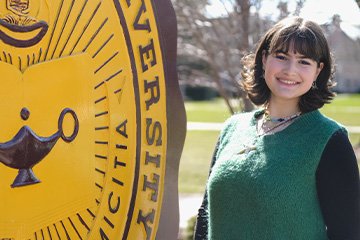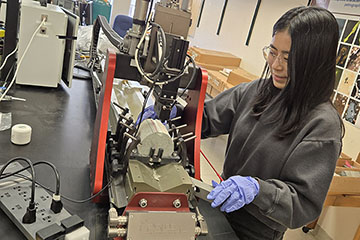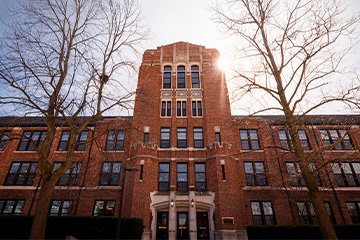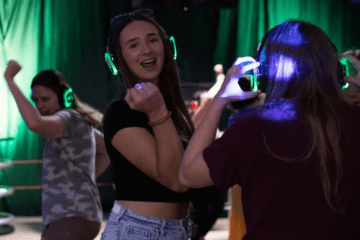Simulation provides a deep look at poverty
Participants struggle to make ends meet 15 minutes at a time
Molly Yonker has walked a couple of miles in other people’s shoes through a Central Michigan University simulation where participants experience the challenges of living in poverty.
Her main takeaway: poverty isn’t as simple as people might think.
“There are so many layers to it that people don’t think about or reflect on,” said Yonker, a senior in the family studies program.
Yonker has participated in the poverty simulation twice, the first as someone struggling to make ends meet and the second as a resource people need to visit.
The goal is to provide students with as broad an experience as possible, said Jeffrey Angera, a member of the Human Development and Family Studies department faculty.
First-time students are usually assigned a role as a person who faces poverty. They include single parents, large families, or – in Yonkers’s case – an elderly woman struggling to make ends meet.
During the simulation, 15 minutes represents a week, and participants must earn money, pay bills and sometimes deal with unexpected circumstances. Everyone gets a total of one hour to live out a month. There’s an hour following for conversation among the participants.
Yonker said her medical bills unexpectedly increased during the simulation, forcing her to make difficult choices.
As someone on a fixed income, she also had to spend extra time asking for additional assistance from social service agencies. Some weeks, she didn’t get to the grocery store because she ran out of money and/or time.
Service provider roles are assigned to second-time participants, Angera said. Some students play the role of government agencies that provide direct assistance. Yonker was the community grocery store.
During the most recent simulation, Yonker said the first few weeks were slow at the grocery store as participants overlooked the need to eat while ensuring that other bills got paid.
She said she had to issue nutrition notices advising families that child protective services might visit them if they kept overlooking food.
The immersive experience can overwhelm participants.
“Lots of running around,” Yonker said. “Lots of chaos.”
The experience provided valuable insights into challenges that will confront her after she graduates and starts a career in volunteer programming, she said.
Yonker is also working towards minors in non-profit leadership and service. Once she graduates, she said she’d like to attend graduate school and eventually help run an alternative breaks program.
She currently works for CMU’s alternative breaks program, which pairs CMU students with different community partners to help develop direct-service experiences dedicated to social justice.
One takeaway from the simulation is that poverty is a layered problem, she said. Some people might be capable of supporting themselves but can’t because of structural barriers created by the very nature of poverty.
She hopes to use her experiences with the simulation to identify the root causes of a community’s problem rather than providing temporary fixes to complex issues. Addressing problems within a community requires real partnerships and investment by volunteers, she said.
She came to the program with experience volunteering around the Mount Pleasant community, especially at some of the agencies housed at the William and Janet Strickler Center. Participating in the poverty simulation has helped her see the importance of every volunteering role, she said.
The poverty simulation has returned following the COVID-19 pandemic, Angera said. They’ve run it twice this year, and have another planned for the Spring semester.




